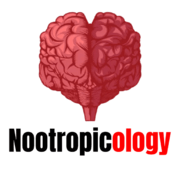What Is The Best Sulbutiamine Stack?
We often come across questions from people asking what the best stack is for sulbutiamine use and also the best dosage to use.
This article is going to cover some of the most common sulbutiamine stacks, dosages, and effects. It will also give some information about Sulbutiamine's exact mechanism of action in relation to dopamine levels in the brain.
What Is Sulbutiamine?
Sulbutiamine is a synthetic intermediate for the synthesis of theophylline but with an appropriate side chain attached to it, which is therefore a kind of prodrug, one that delivers the active ingredients to the body at low concentrations when consumed as a dietary supplement and then metabolizes into these active ingredients elsewhere.
Sulbutiamine exerts its effects as a selective and very strong antagonist at N-methyl-D-aspartate (NMDA) receptors. In the brain, NMDA receptors are primarily found in the basal ganglia and cortex.
They control brain activity, including movement, perception, cognition, learning, memory and emotions linked with impulse control especially aggression. Increased activity in these areas leads to the creation of these often undesirable impulses/feelings/thoughts etc.
That is why sulbutiamine is purported to be an anti-aggressive drug. As we will see, it does have significant mood-enhancing capabilities.
How Sulbutiamine Works in The Brain
The way sulbutiamine works is by blocking the NMDA receptors in the brain. It stops the signals from getting into your brain which causes a calming effect. This blocking process decreases anxiety and also increases dopamine levels which we will discuss in more detail later in this article.
Neurotransmitters are substances that carry messages from one neuron to another across a small space, called a synapse. When these messages reach their destination they are taken up by tiny sacs called vesicles, which then release them into the gap between neurons (the synaptic cleft).
The messages which are sent from neuron to neuron are called neurotransmitters and there are a vast array of these, all with different roles and effects. Some examples include serotonin, dopamine, noradrenaline (norepinephrine), etc.
These neurotransmitters can affect the perception of a feeling or even initiate it. For example, dopamine is known to be released in anticipation for an event that you're looking forward to such as receiving some money or experiencing a pleasurable activity. Dopamine is used for creating feelings of happiness and pleasure.
Sulbutiamine and Dopamine
Dopamine is a neurotransmitter which is involved in the creation of feelings of pleasure and well being. It's also a neurotransmitter which can also promote addiction to drugs such as cocaine and nicotine, which in combination with stimulant drugs such as cocaine or speed causes 'methamphetamine like' effects such as increased mental focus and energy, feelings of euphoria, increased productivity, stamina/strength like you've never seen before, heightened self confidence/self esteem.
So what the heck is happening here? Well it's actually far more simple than you'd think because sulbutiamine increases dopamine levels. It does so in a different way to amphetamines and other dopaminergic drugs; it increases dopamine levels in a non-addictive way (this is the beauty of sulbutiamine).
Scientists have discovered that amphetamines and other dopaminergic drugs act on neurons where dopamine has been released by sending an inhibitory signal back up to the brain via dopamine D1 receptors.
I know this is all starting to sound like science jargon, but just bear with me for a second. The effects of sulbutiamine on your mood and productivity are brought on through an increase in dopamine levels. Sulbutiamine also causes an increase of glutamate, which enhances communication between nerves.
Sulbutiamine and Serotonin
There is also some evidence that shows that sulbutiamine increases serotonergic activity which could explain why it has mental enhancing effects, particularly for depression.
Sulbutiamine, Norepinephrine and Epinephrine:
The sulbutiamine research team also found that this chemical has a significant effect on norepinephrine (noradrenaline) levels in the brain. They found that its ability to increase norepinephrine levels was comparable to the effect of stimulating norepinephrine neurons with serotonin or dopamine.
The Best Sulbutiamine Stack
There are many sulbutiamine reviews online which claim that combining it with other nootropics can have an even more enhanced effect. In fact the Japanese government approved sulbutiamine for use in conjunction with other nootropics to enhance learning and memory.
So what is the best Sulbutiamine stack? Some users recommend stacking it with Racetam nootropics such as Piracetam, Aniracetam or Oxiracetam.
I would recommend checking out the Sulbutiamine & Nootropic stacks page as there are stacks for every type of person including beginners and advanced users. You can find out how to take the best Sulbutiamine stack here.
